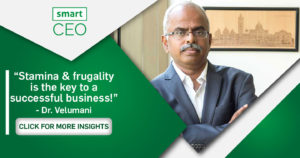Capitalising on mobile and Internet penetration, Healthenablr, a patient-centric telehealth platform, aims to spread its reach to numerous cities by maintaining a balance between organic and inorganic growth.
Imagine a service that connects you to a doctor at any given time and allows you to schedule appointments and provides an access to communication. That’s just what Healthenablr, a patient-centric telehealth platform, does. It connects patients to doctors anytime, anywhere at the click of a button by providing secure communication, appointment, wellness and health management tools to the patients. It also links doctors and hospitals to these patients by providing practice management, billing, analytics, care management and care coordination capabilities. “When you are looking for healthcare services, sometimes, it is difficult to get connected to someone who offers the best care or to know the cost of services being offered,” states Bamasish Paul, co-founder and CEO. Keeping this in mind, Healthenablr was incorporated in June last year, as a service platform that allows a patient to search for healthcare professionals based on rating, reviews, specialty and their affiliations.
The company also provides a robust practice management and EMR (standardised clinical record management and exchange) functionality to the doctors. Through its structured clinical documentation, it builds clinical analytics and guidelines for doctors along with video-based consultations and remote monitoring services, to provide better quality care. Today, it has over 8,000 validated doctors in its network with a presence in eight cities (predominantly in Mumbai and Kolkata). It is adding another 12,000 doctors over the next two to three months and by the end of the second quarter of the current fiscal, it aims to have 20,000 doctors in its network. On an average, currently, Healthenablr has around 1,000 to 1,200 consults a month on its platform. And, it plans to expand into other cities by the end of the year.
India is at a nascent stage today and this is a new concept even in the U.S. with very few companies in the digital healthcare space. With the growth of technology-based healthcare services, this market is going to explode in the next two to three years.
The company recently raised seed funding to the tune of US $800,000 from Silicon Valley professionals, Hong Kong-based private investors and HNIs from India and these funds will be used for marketing and product development.
Three Ways To Consult
“With telemedicine at the core of the business, we are differentiating ourselves by building related businesses and plugging that in to the telemedicine platform,” states Paul. This means, when the telemedicine or telehealth module is plugged into a practice management solution, a doctor can reach out to patients outside his/her local market. It is not a hyper-local practice anymore. “A doctor from Mumbai can consult with a patient even outside the country,” says Paul. This is the POCCLINIC software for doctors.
The POCCARE software allows patients to search for doctors locally and internationally and not only book an appointment but also pay online. “While making payments, we return some incentive to the patient in the form of a 5 per cent to 10 per cent discount,” adds Paul. There are three types of consults – video appointment, personal visit and live chat. “Today, the most traction is on messaging and chat followed by video,” says Paul. The company is also in the process of setting up a second opinion panel which will be operational soon. Effectively, a patient uses the app or website to store and manage their health record and interacts with the doctor. More importantly, these two softwares are integrated at the backend.
The team at Healthenablr believes that since the company is in the services business dealing with patients, it needs to build lasting relationships alongside selling a service.
Technology enabled reach
“Healthcare is a multibillion dollar industry and with mobile and Internet penetration, technology will play a critical role going forward,” opines Paul. Almost 10 per cent to 20 per cent of that market in due course will be dictated by technology, especially, mobile technology. Commenting on why he set up a business in this sector, Paul says, “Indian healthcare is at a nascent stage today and this is a new concept even in the U.S., with very few companies in the digital healthcare space. With the growth of technology-based healthcare services, this market is going to explode in the next two to three years.” This apart, considering the current pace of life, this form of delivering healthcare to patients – through mobile and cloud based technology solutions – is likely to save time and energy for all.
However, Paul does admit that the adoption of this solution will take time as patients are still used to the traditional way of seeing doctors. “It is inevitable that this will be the future mode of treating patients, at least for basic symptoms,” he states. He is quick to add, “While this is more suitable for general symptoms and illnesses, follow up discussions for serious ailments like cancer or heart disease, can also happen through such means.”
The Right Marketing Connect
HealthEnablr is active on social media and is tying up with corporates with a large employee base, offering them co-branding opportunities. It is also into offline events such as setting up promotional kiosks in IT parks and residential areas. This apart, it does healthcare camps and is always present in conferences and seminars attended by doctors, both offline and online.
The company’s strategy to achieve scale is to work on customer acquisition. It is tying up with corporate, employer groups and with insurance companies and working on getting more patient customers to register on its platform. With a higher customer engagement on the platform through mobile apps, it is relatively simpler to get doctors to use the platform. “If we look at meeting a doctor in person and giving a demo, it is an expensive customer acquisition strategy. We do not want to rush into scaling that business significantly higher,” says Paul. He adds, “20,000 doctors on our network will take care of our consumer demand. We are focussed on driving consumer engagement and consumer-based revenue management.”
In the next three years, Healthenablr wants to scale up its business, be in more number of cities and focus on increasing the bottom-line. The company aims to breakeven and become profitable in less than three years. “We plan to take the organic and inorganic acquisition route to grow our market and will soon get into the medical tourism sector,” signs off Paul.
Snapshot
Healthenablr
Founder: Bamasish Paul
Funding: US $800,000 from Silicon Valley professionals, Hong Kong-based private investors and HNIs from India
Use of funds: Product Development and Marketing
Key Focus: TeleMedicine, enabling video consultations on the mobile
No. of doctors: 8000 verified doctors




